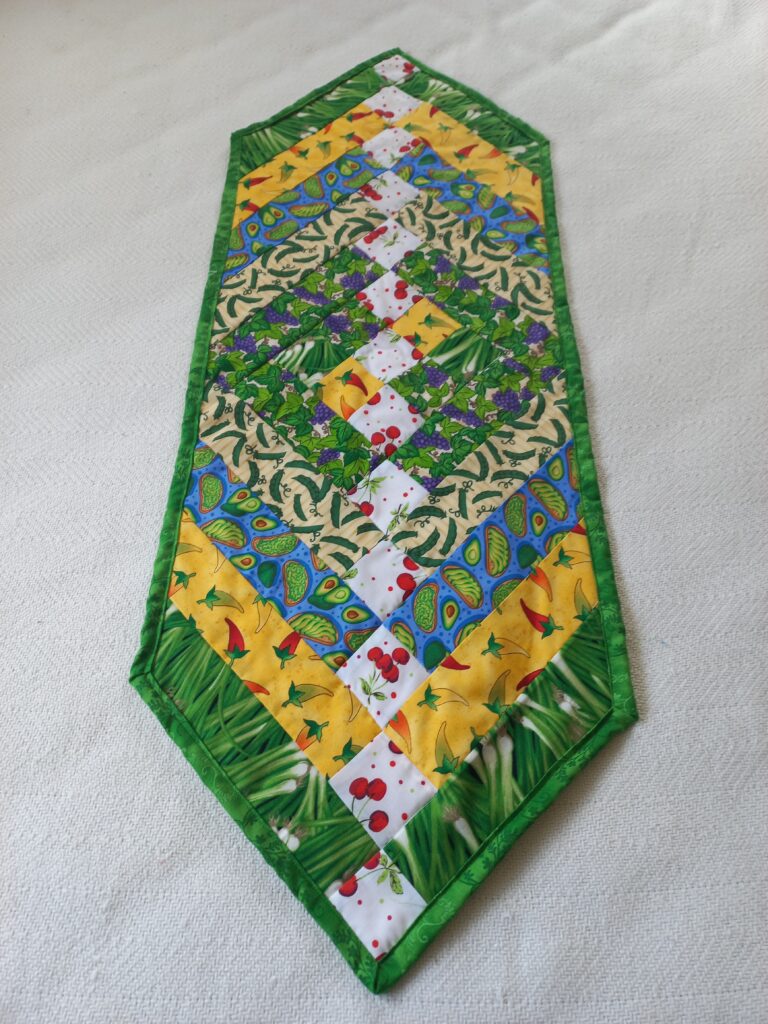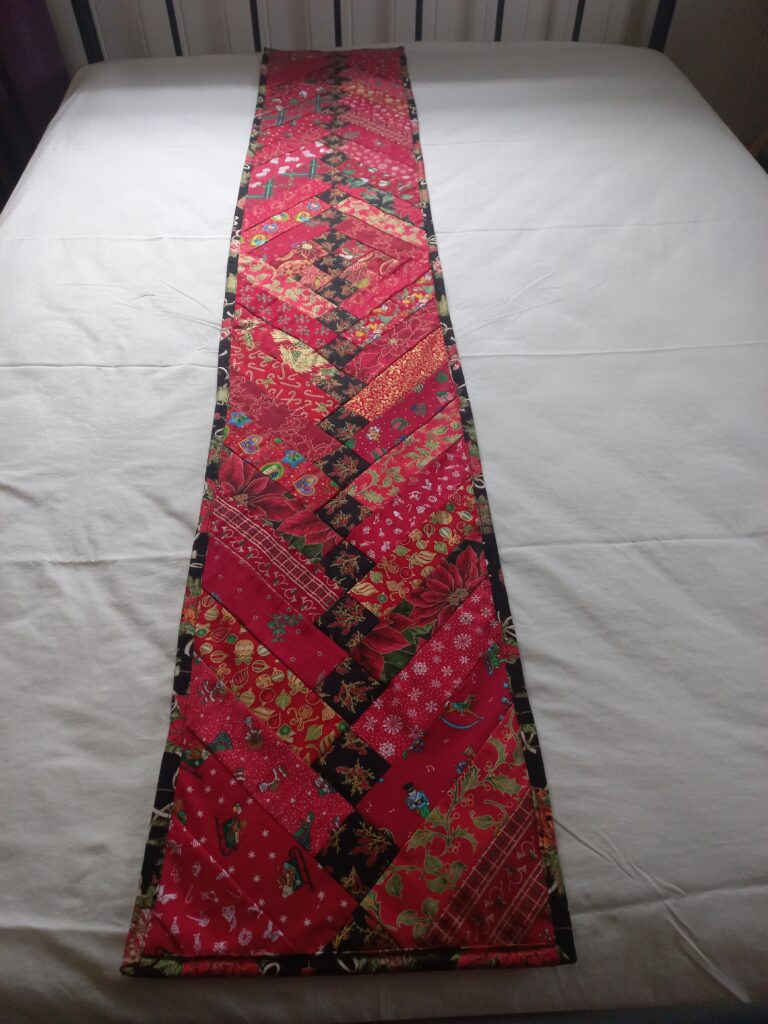An Easy Pattern and Effective Use of Left Over 2.5-inch Strips
Patricia taught me this table runner very early in my quilting journey.
It’s a pattern by Carolyn Hutchinson at CarolynsInStitches. https://www.etsy.com/au/shop/CarolynsInStitches
Trish and I just love it. We’ve lost count of how many we’ve made.
They are quick and easy to make and look stunning in any size or colour.
Trisha taught me to use a nine-patch in the centre and to sew the dark 2.5 inch centre squares the entire length of the runner, but when I found some pretty fabric pictures about the same size as a nine-patch, I deviated from the pattern and used the pictures.

I’ve made these with as little as two sets of arms on one side and two on the other side of the nine-patch (the pattern reminds me of the configuration of a herringbone cow shed). Two sets of arms on either side make a lovely placemat. I’ve made up to twelve arms on either side. The latter creates a runner about 1.8 metres long. (The customer had a long table!)
I’ve also had a request to cut off the points. I prefer leaving the points on, but having worked in retail in my early adulthood, I’m told the customer is always right.

Patricia and I have made these:-
- with the same fabric in the same place on either side of the nine-patch
- with different strips of fabric in every place
- with light-coloured centre strips
- with dark centre strips
- used an embroidered centre piece instead of a nine-patch
- used a fabric picture instead of a nine-patch
- used quilted wadding and stitched inside, turned out and top-stitched the sides instead of backing and binding
- backed and bound (I prefer this method to the top-stitched style because the binding frames the runner.)
When I first made them, I would sew the front to wadding already quilted, but some waddings pill after a few washes, so I began using a backing fabric and binding them. There may be some waddings that don’t pill but I haven’t explored that option.



You can be adventurous with the stitching in the ditches with this pattern, too. There are multiple ways of ensuring the stitches make a nice pattern on the back of the runner.

